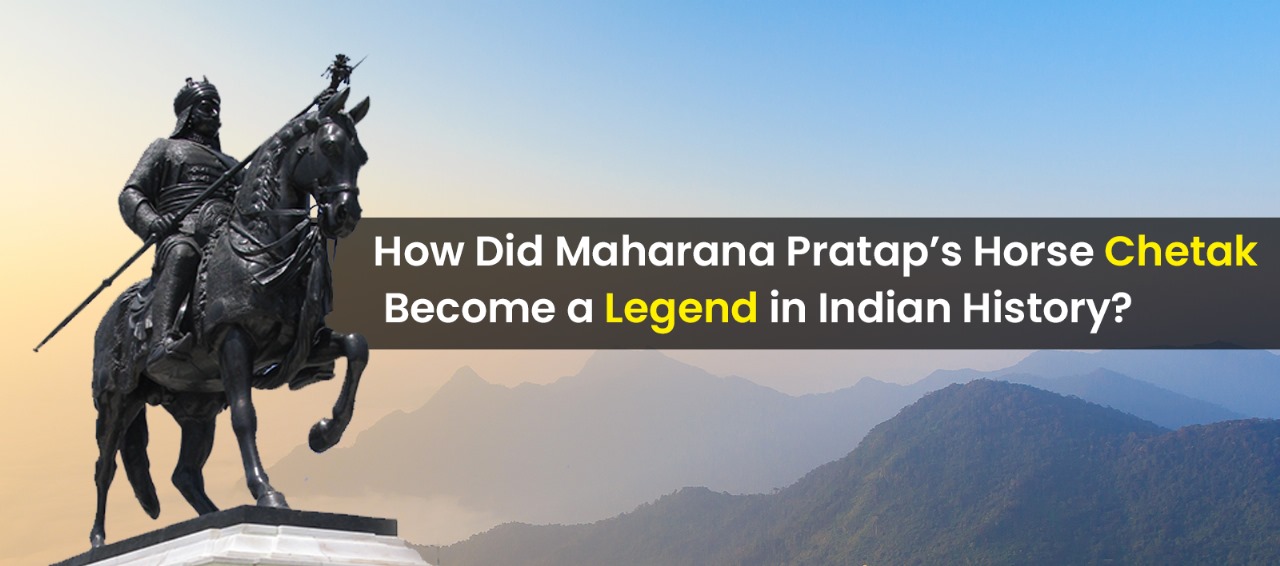How Did Maharana Pratap’s Horse Chetak Become a Legend in Indian History?
In the glorious history of India, few names shine as brightly as Maharana Pratap. But alongside this fearless Rajput warrior, another name echoes with equal honour – Chetak, his brave and loyal horse. Chetak’s unmatched courage during the Battle of Haldighati made him more than just an animal; he became a true symbol of loyalty, bravery, and sacrifice. At Pratap Gaurav Kendra in Udaipur, visitors can witness this incredible tale come alive through grand visuals and detailed displays.
How Did Chetak Help Maharana Pratap Escape the Battle of Haldighati?
The Battle of Haldighati, fought on 18th June 1576 between the forces of Maharana Pratap and the Mughal army, was a turning point in Rajput history. Though the Mughals had a larger and more powerful army, Maharana Pratap fought with unmatched valour. By his side was Chetak, a strong and swift Marwari horse, known for his unique blue-grey colour and fighting spirit.
Key Role of Chetak in the Battle:
- Chetak carried Maharana Pratap into the heart of the battlefield without fear.
- He stood on his hind legs to allow his master to attack Man Singh’s elephant-mounted force.
- During the attack, Chetak got seriously injured by the enemy elephant’s tusk.
- Despite the deep wounds, Chetak managed to take Maharana Pratap away from danger.
It is believed that Chetak’s jump covered a distance of 22 to 26 feet, a feat that is remembered and respected even today. Sadly, after saving his master, Chetak collapsed and died due to his injuries.
If you are planning to explore the cultural heritage of Rajasthan, visiting a famous Museum in Udaipur should definitely be on your list.
The Place Where Chetak Fell: A Site of Honour
Maharana Pratap was deeply moved by Chetak’s loyalty and built a memorial called “Chetak Samadhi” at the exact spot in Haldighati where Chetak took his last breath. Today, this site attracts thousands of visitors every year. At Pratap Gaurav Kendra, this moment of sacrifice is recreated through statues, scenes, and storytelling that touch the heart of every Indian.
Chetak in Rajasthani Folk Culture
Chetak is not only remembered through history books but also lives on in:
- Traditional Rajasthani songs and bhajans
- Statues and paintings across Udaipur and Haldighati
- School textbooks that teach about bravery and sacrifice
- Documentaries, patriotic TV shows, and local theatre
- Literature and poems written by regional writers
Though the exact details may vary from story to story, one thing remains clear—Chetak is an unforgettable symbol of India’s heroic past.
Frequently Asked Questions (FAQs)
Q1. What is the name of Maharana Pratap’s horse?
The name of Maharana Pratap’s horse was Chetak, a brave and loyal animal who played a crucial role in the Battle of Haldighati.
Q2. How far did Chetak jump during the Battle of Haldighati?
Chetak is believed to have leapt approximately 22 to 26 feet across a stream while carrying the Maharana Pratap. Although different sources mention varying distances, the act is universally regarded as an extraordinary moment of bravery in Indian history.
Q3. Why is Chetak so famous?
Chetak is remembered for his unmatched loyalty and courage. Even after being injured in battle, he carried his master to safety and sacrificed his life. His story is a shining example of true devotion.
Q4. Where is Chetak’s memorial located?
Chetak’s memorial, called Chetak Samadhi, is located in Haldighati, near Udaipur, Rajasthan. It marks the spot where Chetak died after saving Maharana Pratap.
Q5. What can I see at Pratap Gaurav Kendra related to Chetak?
At Pratap Gaurav Kendra, you can see lifelike statues, battlefield scenes, and audiovisual presentations that show Chetak’s heroic actions during the Battle of Haldighati. It is one of the best places to learn about this legend.
Conclusion
The tale of Chetak is not just a story from the past. It is a timeless lesson in loyalty, courage, and sacrifice. He did not just carry a warrior; he carried the hopes of a kingdom. His final leap was not only an escape but a leap into history.
To feel the spirit of Chetak and learn more about India’s glorious past, plan a visit to Pratap Gaurav Kendra. It is here that the story of a horse who became a legend comes alive—and inspires every Indian heart.


